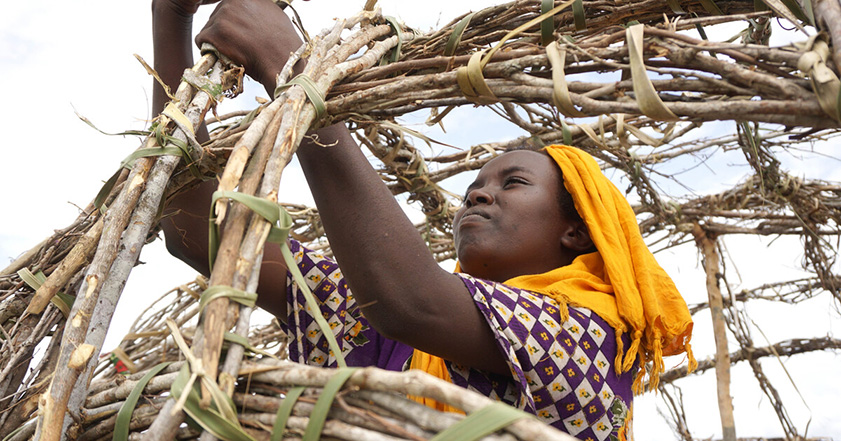Climate change poses a significant threat to humanity. It is a threat which can only be tackled with immediate global action.
The global climate is changing at an unprecedented rate and it’s having dramatic effects on our environment.
Rising sea levels caused by shrinking glaciers and melting sea ice are increasing the risk of devastating floods. Shifting weather patterns are threatening food production and making weather-related events more extreme.
Vital social infrastructures are under threat, like water resources, energy, transportation, agriculture and human health, as well as local ecosystems and wildlife.
The climate crisis is a humanitarian crisis.
We see this every time we work with communities who have lost their homes, livelihoods or loved ones to hurricanes, tropical storms, flooding and drought.
Homes made by hand
Extreme weather events happen more often in countries where many people are living in poverty. And each new disaster makes their situation worse.
We work with people living in places where homes are often made from wood and materials found locally, like in Malawi. These homes are made by hand, by traditional methods passed down from one generation to the next. But they are not designed to withstand the increasing severity of tropical storms and hurricanes.
When Cyclone Idai devastated Malawi in March 2019, families saw their homes and livelihoods washed away, sunk into the rising floodwaters. Stephano told us:
“On the day of the flood the rain started at 5pm, but the flood that caused houses to fall started at 11pm. By the middle of the night, all the houses had fallen. Our livestock were getting carried away with the water. The crocodiles were so close to us, attacking the cows.”
Vulnerable locations
We support people living in places that are vulnerable to extreme weather events, who are often not well equipped to withstand the worsening conditions, like the families we’ve supported in the Philippines.
But why do people live in places that they know are at risk of hurricanes, floods and even volcanic eruptions?
Often there are social and cultural reasons – it’s where people have always lived. Sometimes the opportunities outweigh the risks. For example, the ground near volcanoes is very fertile for growing crops, enhanced by the volcanic ash.
When it comes to low-lying coastal areas and urban areas at higher risk from hurricanes and flooding, it is often because it is cheaper. People who can’t afford to live in safer areas create homes where they will be more vulnerable to disaster because it’s the only place they can afford.
We recently spoke to communities in Asuncion, Paraguay. These communities have been devastated by severe flooding earlier this year. Mirta, pictured below, spoke to us about her living conditions.
Natural resources lost
We’re also seeing how climate change has reduced the availability of natural resources, leaving communities far more vulnerable to extremist groups.
This can contribute to complex conflict situations, like in the Lake Chad Basin which originally reached across Nigeria, Cameroon, Niger and Chad. Historically, people across the Lake Chad Basin region relied on the lake for their livelihoods, living on the plentiful fish and fertile land. But since the 1960s, the lake has shrunk by about 90%, turning the area to desert.
This is due to a mix of climate change, increasing population, overuse and irrigation. In one of the hottest places on earth, it is now almost impossible to make a living from the land or the lake, contributing to the influence of Boko Haram in the region.
Find out more about how climate change is affecting disasters and read our commitment to understanding our impact on the environment here.

